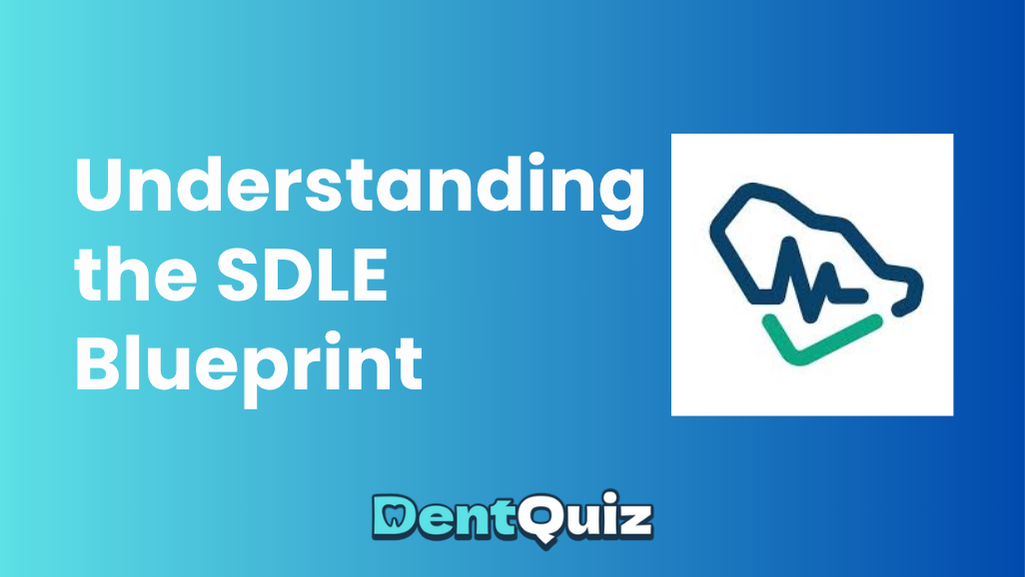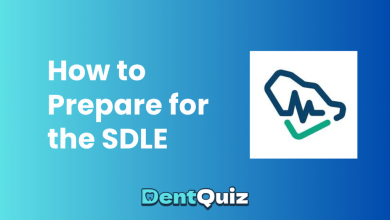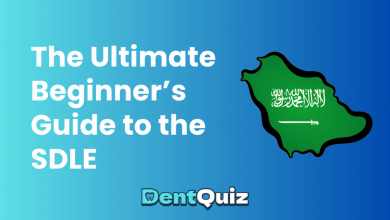Understanding the SDLE Blueprint: What Every Dental Candidate Should Know

One of the smartest ways to prepare for the Saudi Dental Licensure Examination (SDLE) is to understand its blueprint — the roadmap that defines what subjects are tested, how questions are distributed, and what skills are being evaluated. In this guide, we’ll break down the SDLE blueprint, explain its categories, and show you how to use it to design an efficient study strategy.
What is the SDLE blueprint?
The SDLE blueprint is an official framework developed by the Saudi Commission for Health Specialties (SCFHS) to ensure that the exam accurately measures the competencies required for safe dental practice. In simple terms, the blueprint is the “map” of the exam — it determines which subjects appear, how many questions come from each, and what type of knowledge and skills are being tested.
Understanding this structure helps candidates study smarter. Instead of trying to memorize everything, you can allocate time based on topic importance and weight percentage.
Subject weight distribution in the SDLE
The SDLE covers five main disciplines of dentistry, each with its own proportional weight in the total exam. The distribution ensures a balanced assessment of theoretical and clinical competencies.
- Restorative Dentistry (including Prosthodontics and Operative Dentistry): 40%
- Periodontics: 18%
- Endodontics: 17%
- Oral Medicine / Oral Surgery: 15%
- Orthodontics and Pediatric Dentistry: 10%
Additionally, some topics are common to all sections — such as Local Anesthesia, Professionalism & Bioethics, Infection Control, and Patient Safety. These are considered fundamental principles that apply across all areas of dental practice.
Domains assessed in each section
The SDLE doesn’t just test what you know — it tests what you can do with that knowledge. Each section includes a mix of questions that assess different domains of competency:
- Diagnosis: Identifying dental conditions and interpreting clinical findings.
- Clinical Management: Planning and executing safe and effective treatments.
- Dental Materials & Instruments: Understanding how and when to use appropriate tools and materials.
- Adverse Effects / Complications: Managing potential risks, emergencies, or unexpected outcomes.
Together, these domains ensure that the SDLE reflects real-world dentistry, focusing on reasoning, decision-making, and patient safety.
Detailed content outline of the SDLE
Below is an overview of the official SDLE content outline, based on the SCFHS applicant guide. Each domain contains multiple subtopics that candidates should be familiar with before taking the exam.
Endodontics
- Endodontic emergencies and treatment planning
- Instruments and techniques in root canal therapy
- Pulpal and periapical pathosis
- Endo-perio lesions and vertical root fractures
- Trauma management for permanent teeth
- Common procedural mishaps and their prevention
Oral Medicine & Oral Surgery
- Oral and maxillofacial pathology (including bone, mucosal, and salivary gland diseases)
- Exodontia, local anesthesia, and management of impacted teeth
- Allergies, systemic diseases, and oral manifestations of medical conditions
- Odontogenic cysts and tumors, facial pain, and trauma management
- Principles of surgery and infection control
Orthodontics & Pediatric Dentistry
- Diagnosis and classification of malocclusion (Class I, II, III)
- Space management, occlusion, and interceptive treatment
- Cephalometric analysis and biology of tooth movement
- Pediatric oral surgery and pulp therapy
- Child behavior management and prevention of dental caries
- Dentoalveolar trauma and developmental defects
Periodontics
- Diagnosis and classification of periodontal diseases
- Risk factor analysis and applied pathology
- Periodontal anatomy, histology, and surgical therapy
- Non-surgical therapy and basic implant dentistry
- Management of peri-implant diseases
- Multidisciplinary collaboration and referral principles
Restorative Dentistry
- Operative Dentistry principles and cavity design
- Fixed and removable prosthodontics
- Complete dentures and occlusal concepts
- Basic implantology and restorative material selection
- Esthetic considerations and iatrogenic factors
How to use the blueprint for effective preparation
Understanding the SDLE blueprint gives you a clear advantage. Here’s how to use it strategically in your study plan:
- Prioritize by weight: Focus most of your time on Restorative Dentistry, Periodontics, and Endodontics — together, they represent 75% of the exam.
- Integrate interdisciplinary study: Many cases overlap between specialties. For example, a restorative case may involve periodontal assessment or endodontic retreatment.
- Emphasize clinical reasoning: The blueprint focuses on problem-solving and decision-making, not rote memorization.
- Use official resources: Review recommended textbooks from SCFHS and practice mock exams that follow the blueprint’s proportions.
- Track your progress: Create a visual chart showing your performance by section — adjust your study time accordingly.
By aligning your preparation to the blueprint, you’ll ensure balanced readiness across all domains and reduce the risk of weak spots.
Blueprint updates and flexibility
The SCFHS periodically reviews and revises the SDLE blueprint to reflect new clinical guidelines, emerging research, and evolving best practices. The weight percentages may vary by ±5% in each category.
For this reason, always check the official SCFHS website for the latest updates before finalizing your study plan. Staying current is essential — dental practice evolves, and so does the licensing exam.
Recommended references aligned with the SDLE blueprint
While the SCFHS doesn’t endorse specific materials, it provides a list of commonly used textbooks and references to help candidates focus their studies. Here are some examples from the official guide:
- Endodontics: Cohen & Hargreaves, Pathways of the Pulp.
- Periodontics: Carranza’s Clinical Periodontology; Lindhe & Lang, Clinical Periodontology and Implant Dentistry.
- Oral Medicine/Surgery: Neville’s Oral and Maxillofacial Pathology; Hupp’s Contemporary Oral and Maxillofacial Surgery.
- Restorative: Sturdevant’s Art and Science of Operative Dentistry; Rosenstiel’s Contemporary Fixed Prosthodontics.
- Orthodontics/Pediatrics: Proffit’s Contemporary Orthodontics; Dean’s McDonald and Avery’s Dentistry for the Child and Adolescent.
Combining these resources with blueprint-based question banks and mock exams is the most effective way to prepare.
Final thoughts
The SDLE blueprint is more than a list of topics — it’s a strategic tool for success. When used properly, it guides your preparation, helps you focus on what truly matters, and prevents wasted effort on low-yield areas. Every question in the SDLE is designed to assess not just recall, but judgment and competence.
So before you open your next textbook, take a moment to revisit the blueprint. Align your study sessions with it, track your mastery across each domain, and you’ll walk into the exam with clarity and confidence.
For updated SDLE study plans, mock tests, and performance analytics designed around the official blueprint, visit DentQuiz — your trusted partner for Saudi Dental Exam preparation.




